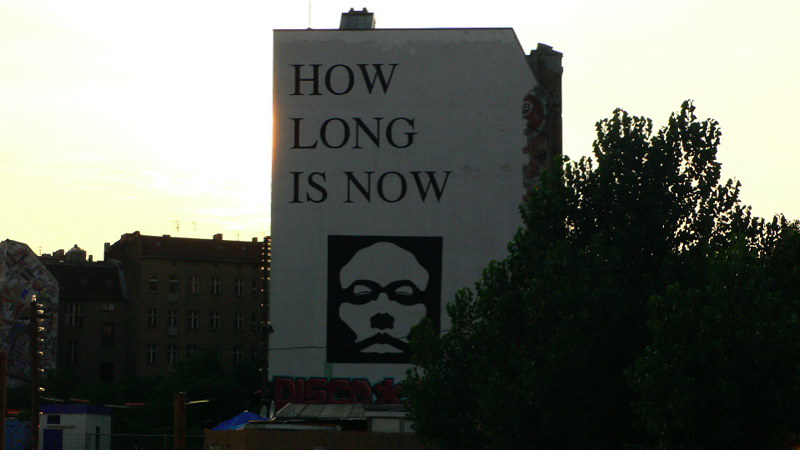Archive for the ‘Seeing Things As They Are’ Category
Good Questions
This seems like a repeat of the last time we set a project launch date without regard for the work content. Do you see it that way?
This person certainly looks the part and went to the right school, but they have not done this work before. Why do you think we should hire them even though they don’t have the experience?
The last time we ran a project like this it took two years to complete. Why do you think this one will take six months?
If it didn’t work last time, why do you think it will work this time?
Why do you think we can do twice the work we did last year while reducing our headcount?
The work content, timeline, and budget are intimately linked. Why do you think it’s possible to increase the work content, pull in the timeline, and reduce the budget?
Seven out of thirteen people have left the team. How many people have to leave before you think we have a problem?
Yes, we’ve had great success with that approach over the last decade, but our most recent effort demonstrated that our returns are diminishing. Why do you want to do that again?
If you think it’s such a good idea, why don’t you do it?
Why do you think it’s okay to add another project when we’re behind on all our existing projects?
Customers are buying the competitive technology. Why don’t you believe that they’re now better than we are?
This work is critical to our success, yet we don’t have the skills sets, capacity, or budget to hire it out. Why are you telling us you will get it done?
This problem seems to fit squarely within your span of responsibility. Why do you expect other teams to fix it for you?
I know a resource gap of this magnitude seems unbelievable but is what the capacity model shows. Why don’t you believe the capacity model?
We have no one to do that work. Why do you think it’s okay to ask the team to sign up for something they can’t pull off?
Based on the survey results, the culture is declining. Why don’t you want to acknowledge that?
“I have a question” by The U.S. Army is licensed under CC BY 2.0
Taking vacations and holidays are the most productive things you can do.
 It’s not a vacation unless you forget about work.
It’s not a vacation unless you forget about work.
It’s not a holiday unless you leave your phone at home.
If you must check-in at work, you’re not on vacation.
If you feel guilty that you did not check-in at work, you’re not on holiday.
If you long for work while you’re on vacation, do something more interesting on vacation.
If you wish you were at work, you get no credit for taking a holiday.
If people know you won’t return their calls, they know you are on vacation.
If people would rather make a decision than call you, they know you’re on holiday.
If you check your voicemail, you’re not on vacation.
If you check your email, you’re not on holiday.
If your company asks you to check-in, they don’t understand vacation.
If people at your company invite you to a meeting, they don’t understand holiday.
Vacation is productive in that you return to work and you are more productive.
Holiday is not wasteful because when you return to work you don’t waste time.
Vacation is profitable because when you return you make fewer mistakes.
Holiday is skillful because when you return your skills are dialed in.
Vacation is useful because when you return you are useful.
Holiday is fun because when you return you bring fun to your work.
If you skip your vacation, you cannot give your best to your company and to yourself.
If neglect your holiday, you neglect your responsibility to do your best work.
Don’t skip your vacation and don’t neglect your holiday. Both are bad for business and for you.
“CatchingButterflies on Vacation” by OakleyOriginals is licensed under CC BY 2.0
Work is 95% Noise
 There’s a lot of noise at work. I’m not talking about the audible noise you hear in your office or the chatter of your coworkers. I’m talking about the noise purposefully created to slather a layer of importance to things that aren’t all that important.
There’s a lot of noise at work. I’m not talking about the audible noise you hear in your office or the chatter of your coworkers. I’m talking about the noise purposefully created to slather a layer of importance to things that aren’t all that important.
Corporate priorities are created at the company level to move the company in a new direction. There are regular presentations made by the leadership team to educate everyone on the new direction and help everyone think the initiative is important. This takes a lot of time and energy. Then, there are regular meetings held across the company to hear the sermon of the corporate priorities. How much does it cost for everyone in the company to sit through a one-hour sermon on corporate priorities? How much does it cost to do this quarterly or monthly? Because the cost is high and the value is low, corporate priorities have a high noise content.
Monthly reports on the status of the corporate priorities take a lot of work to pull together. These reports tell us how things are going at a high level but are not actionable. Some initiatives are green, some are yellow, and some are red. So what? After reading a monthly report of a corporate initiative, have you ever changed your work in any way? I didn’t think so, because the report is noise.
If your work brings about no changes, the work is noise.
If you complete a talent assessment for your team and no one’s work changes or no one changes teams, the talent assessment is noise. If you are asked to create a summary of your work experience to support a talent assessment and nothing changes after the assessment, the talent assessment program is noise. If you are asked to put together a succession plan and nothing changes, the succession planning process is noise. If you are asked to put together an improvement plan for your team’s culture and no one reads the plan or holds you accountable, the culture improvement program is noise.
If you write a monthly report and no asks questions about it, the monthly reporting process is noise. If you write a charter for a project and no one asks questions about it, the project definition process is noise. If someone sets up a meeting without a defined agenda, that meeting is noise. If no one writes meeting minutes, the meeting is noise. If there will be no decision made at the meeting, don’t go because that meeting is noise.
Work is 95% noise.
If someone asks for help, help them because that is not noise. When you see a problem, do something about it because that’s not noise. When you see something that’s missing, fill the hole because that’s not noise. When something interests you, investigate it because that’s not noise. When your curiosity gets the best of you, that’s not noise. When something is important to you, that’s not noise. When something should be important to someone else, tell them because that’s not noise.
When the work is noise, don’t do it. But if you must do it, do it with minimal effort and do it poorly. Don’t start the work until two weeks after the deadline. With luck, next time they’ll ask someone else to do it. If you think the work is noise, it probably is. Don’t do the work until you’re asked three times. Then, do it poorly.
If the customer won’t benefit, the work is noise. If the work is new and the customer might benefit, the work is not noise. If you are unsure if the work is noise, ask how might customer benefit. If you are pursuing something that will grow the top line, it’s not noise. If you’re unsure if the work is noise, ask how the work might grow the top line.
If it’s noise, say no. That will free up your time to say yes to things that are real.
“Olive with her NYE hearing protection… Muffs on upside down work great!” by Bekathwia is licensed under CC BY-SA 2.0
Why not now?
 If you are anxious, you’re worried about what might happen. You’re living in the future. If you are sad or angry, you’re reacting to what happened. You’re living in the past. Nothing can be accomplished when living in the past because the die is cast. And nothing can be accomplished when living in the future because it’s all in your head. The only time we have is now.
If you are anxious, you’re worried about what might happen. You’re living in the future. If you are sad or angry, you’re reacting to what happened. You’re living in the past. Nothing can be accomplished when living in the past because the die is cast. And nothing can be accomplished when living in the future because it’s all in your head. The only time we have is now.
The only time to start is now. Even if your project is a short one, you’re in a day-for-day slip with your completion date for every day you don’t start. And this is doubly true for long projects. If you’re living in the past, you block yourself from starting because the last project was difficult, you didn’t have the resources or it didn’t come out as expected, and you want to protect yourself from a rerun. If you’re living in the past, you block yourself from starting because you don’t know how it will turn out, you don’t have all the answers, you don’t have sufficient resources, and you don’t know what you don’t know. Acknowledge the problems with the past and potential problems with the future, and start anyway.
Starting starts with starting.
The only time to say something is now. If you’re living in the past, you block yourself from saying something controversial or thought-provoking because you remember how it went the last time someone did that. If you’re living in the future, you prevent yourself from saying something radical because, well, you weren’t paying attention and missed your opportunity to change history. Acknowledge that there may be some blowback for your insightful comments, live in the now and say them anyway. And live in the now so you can pay attention and use your sharp wit to create the future.
If you don’t say something, nothing is ever said.
The only time to help is now. Living in the past, you block yourself from understanding the significance of the situation because you see it through old lenses. Living in the future, you block yourself from helping because you worry if the helping will help or worry the helping will get in the way of your future commitments. If someone needs help, help them now. They will understand that the outcome is uncertain, and they’re okay with that. In fact, they will be happy you recognized their troubling situation and made time to check in with them. When you live in the now, people appreciate it. The time to help is now.
When no one helps, no one is helped.
When you find yourself living in the past, close your eyes, recognize your anger or sadness, and focus on your breath for ten seconds. And if that doesn’t work, put your hand on your chest and do it again. And if that doesn’t work, tell yourself your sadness is temporary and do it again. This is a fail-safe way to bring yourself into the now. Then, sitting in the now, start that project, say what must be said, and help people.
And when you find yourself living in the future, close your eyes, recognize your anxiety, and focus on your breath for ten seconds. And if that doesn’t work, put your hand on your chest and do it again. And if that doesn’t work, tell yourself your anxiety is temporary and repeat. This will bring you into the now. Then, sitting in the now, start that project, say what must be said, and help people.
The only time to shape the future is now.
“HOW LONG IS NOW” by dr. motte is licensed under CC BY 2.0
What Good Coaches Do
 Good coaches listen to you. They don’t judge, they just listen.
Good coaches listen to you. They don’t judge, they just listen.
Good coaches continually study the game. They do it in private, but they study.
Good coaches tell you that you can do better, and that, too, they do in private.
Good coaches pick you up off the floor. They know that getting knocked over is part of the game.
Good coaches never scream at you, but they will cry with you.
Good coaches never stop being your coach. Never.
Good coaches learn from you, and the best ones tell you when that happens.
Good coaches don’t compromise. Ever.
Good coaches have played the game and have made mistakes. That’s why they’re good coaches.
Good coaches do what’s in your best interest, not theirs.
Good coaches are sometimes wrong, and the best ones tell you when that happens.
Good coaches don’t care what other people think of them, but they care deeply about you.
Good coaches are prepared to be misunderstood, though it’s not their preference.
Good coaches let you bump your head or smash your knee, but, otherwise, they keep you safe.
Good coaches earn your trust.
Good coaches always believe you and perfectly comfortable disagreeing with you at the same time.
Good coaches know it’s always your choice, and they know that’s how deep learning happens.
Good coaches stick with you, unless you don’t do your part.
Good coaches don’t want credit. They want you to grow.
Good coaches don’t have a script. They create a custom training plan based on your needs.
Good coaches simplify things when it’s time, unless it’s time to make things complicated.
Good coaches aren’t always positive, but they are always truthful.
Good coaches are generous with their time.
Good coaches make a difference.
How To See What’s Missing
 With one eye open and the other closed, you have no depth perception. With two eyes open, you see in three dimensions. This ability to see in three dimensions is possible because each eye sees from a unique perspective. The brain knits together the two unique perspectives so you can see the world as it is. Or, as your brain thinks it is, at least.
With one eye open and the other closed, you have no depth perception. With two eyes open, you see in three dimensions. This ability to see in three dimensions is possible because each eye sees from a unique perspective. The brain knits together the two unique perspectives so you can see the world as it is. Or, as your brain thinks it is, at least.
And the same can be said for an organization. When everyone sees things from a single perspective, the organization has no depth perception. But with at least two perspectives, the organization can better see things as they are. The problem is we’re not taught to see from unique perspectives.
With most presentations, the material is delivered from a single perspective with the intention of helping everyone see from that singular perspective. Because there’s no depth to the presentation, it looks the same whether you look at it with one eye or two. But with some training, you can learn how to see depth even when it has purposely been scraped away.
And it’s the same with reports, proposals, and plans. They are usually written from a single perspective with the objective of helping everyone reach a single conclusion. But with some practice, you can learn to see what’s missing to better see things as they are.
When you see what’s missing, you see things in stereo vision.
Here are some tips to help you see what’s missing. Try them out next time you watch a presentation or read a report, proposal, or plan.
When you see a WHAT, look for the missing WHY on the top and HOW on the bottom. Often, at least one slice of bread is missing from the why-what-how sandwich.
When you see a HOW, look for the missing WHO and WHEN. Usually, the bread or meat is missing from the how-who-when sandwich.
Here’s a rule to live by: Without finishing there can be no starting.
When you see a long list of new projects, tasks, or initiatives that will start next year, look for the missing list of activities that would have to stop in order for the new ones to start.
When you see lots of starting, you’ll see a lot of missing finishing.
When you see a proposal to demonstrate something for the first time or an initial pilot, look for the missing resources for the “then what” work. After the prototype is successful, then what? After the pilot is successful, then what? Look for the missing “then what” resources needed to scale the work. It won’t be there.
When you see a plan that requires new capabilities, look for the missing training plan that must be completed before the new work can be done well. And look for the missing budget that won’t be used to pay for the training plan that won’t happen.
When you see an increased output from a system, look for the missing investment needed to make it happen, the missing lead time to get approval for the missing investment, and the missing lead time to put things in place in time to achieve the increased output that won’t be realized.
When you see a completion date, look for the missing breakdown of the work content that wasn’t used to arbitrarily set the completion date that won’t be met.
When you see a cost reduction goal, look for the missing resources that won’t be freed up from other projects to do the cost reduction work that won’t get done.
It’s difficult to see what’s missing. I hope you find these tips helpful.
“missing pieces” by LeaESQUE is licensed under CC BY-ND 2.0
Regardless of the problem, the solution lives inside you.
 If you want things to be different than they are, you have a problem. And if you want things to stay the same, you also have a problem. Either way, you have a problem. You can complain, you can do something about it, or you can accept things as they are.
If you want things to be different than they are, you have a problem. And if you want things to stay the same, you also have a problem. Either way, you have a problem. You can complain, you can do something about it, or you can accept things as they are.
Complaining can be fun for a while, then it turns sour. Doing something about it can take a lot of time and energy, and it’s difficult to know what to do. Accepting things as they are can be a challenge because that means it’s time to change your perspective. But it’s your choice. So, what do you choose?
What does it look like to accept things as they are AND do something about it?
If you want someone to be different than they are, you have a problem. And if you want them to stay the same, you have a different problem. Either way, you have a problem. You can complain about them, you can do something about it, or you can accept them as they are.
Complaining about people can be fun, but only in small doses. Doing something about it, well, that’s difficult because people will do what they want to do, not what you want them to do. Accepting people as they are is difficult because it means you have to look inside and change yourself. But it’s your choice. So, what do you choose?
What does it look like to accept people as they are AND to do something that makes things better for all?
If you have a problem with things changing, the solution lives inside you. Things change. That’s what they do. And if you have a problem with things staying the same, the solution lives inside you. Things stay the same. That’s what they do. Either way, the solution lives inside you, and it’s time to look inside.
How would it feel to own your problem and look inside for the solution?
If you have a problem because you want people to be different, the solution lives inside you. People behave the way they want to behave, not the way you want them to behave. And if you have a problem because you want people to stay the same, the solution lives inside you. People change. That’s what they do. Either way, the problem is you, and it’s time to look inside for the solution.
How would it feel to accept people as they are and look inside to solve your problem?
When your company looks in the mirror, what does it see?
 There are many types of companies, and it can be difficult to categorize them. And even within the company itself, there is disagreement about the company’s character. And one of the main sources of disagreement is born from our desire to classify our company as the type we want it to be rather than as the type that it is.
There are many types of companies, and it can be difficult to categorize them. And even within the company itself, there is disagreement about the company’s character. And one of the main sources of disagreement is born from our desire to classify our company as the type we want it to be rather than as the type that it is.
Here’s a process that may bring consensus to your company.
For all the people on the payroll, assign a job type and tally them up for the various types. If most of your people work in finance, you work for a finance company. If most work in manufacturing, you work for a manufacturing company. The same goes for sales, engineering, customer service, consulting. Write your answer here __________.
For all the company’s profits, assign a type and roll up the totals. If most of the profit is generated through the sale of services, you work for a service company. If most of the profit is generated by the sale of software, you work for a software company. If hardware generates profits, you work for a hardware company. If licensing of technology generates profits, you work at a technology company. Which one fits your company best? Write your answer here _________.
For all the people on the payroll, decide if they work to extend and defend the core offerings (the things that you sell today) or create new offerings in new markets that are sold to new customers. If most of the people work on the core offerings, you work for a low-growth company. If most of the people work to create new offerings (non-core), you work for a high-growth company. Which fits you best – extend and defined the core / low-growth or new offerings / high growth? Write your answer here __________ / ___________.
Now, circle your answers below.
We are a (finance, manufacturing, sales, engineering, customer service, consulting) company that generates most of its profits through the sale of (services, hardware, software, technology). And because most of our people work to (extend and defend the core, create new offerings), we are a (low, high) growth company.
To learn what type of company you work for, read the sentences out loud.
“Grace – Mirror” by phil41dean is licensed under CC BY 2.0
The Discomfort Around Diversity of Perspective
 When your organization doesn’t want to hear your truth because it contradicts a decision they’ve already made, that’s a sign of trouble. It’s a sign they’re going to do what they’re going to and they don’t care all that much about you. But, what if they’re wrong? And what if your perspective could snatch victory from the flames of an impending train wreck? As someone who cares about the company and thinks it would benefit from hearing what you have to say, what do you do?
When your organization doesn’t want to hear your truth because it contradicts a decision they’ve already made, that’s a sign of trouble. It’s a sign they’re going to do what they’re going to and they don’t care all that much about you. But, what if they’re wrong? And what if your perspective could snatch victory from the flames of an impending train wreck? As someone who cares about the company and thinks it would benefit from hearing what you have to say, what do you do?
When you have a culture that makes it clear it’s not okay to share divergent perspectives, you have a big problem.
In domains of high uncertainty, increasing the diversity of perspective is the single most important thing we can do to see things more clearly. In these situations, what matters is the diversity of culture, of heritage, of education, of upbringing, and of experiences. What matters is the diversity of perspective; what matters is the level of divergence among the collective opinions, and what matters most is listening and validating all that diversity.
If you have the diversity of culture, heritage, education, and experience, congratulations. But, if you’re not willing to listen to what that diversity has to say, you’re better off not having it. It’s far less expensive if you don’t have it and far fewer people will be angry when you don’t listen to them. But, there’s a downside – you’ll go out of business sooner.
When you have a perspective that’s different than the Collective’s, share it. And when there are negative consequences for sharing it, accept them. And, rinse and repeat until you get promoted or fired.
“A Sense of Perspective” by dolbinator1000 is licensed under CC BY 2.0
The Illusion of Control
 Unhappy: When you want things to be different than they are.
Unhappy: When you want things to be different than they are.
Happy: When you accept things as they are.
Sad: When you fixate on times when things turned out differently than you wanted.
Neutral: When you know you have little control over how things will turn out.
Anxious: When you fixate on times when things might turn out differently than you want.
Stressed: When you think you have control over how things will turn out.
Relaxed: When you know you don’t have control over how things will turn out.
Agitated: When you live in the future.
Calm: When you live in the present.
Sad: When you live in the past.
Angry: When you expect a just world, but it isn’t.
Neutral: When you expect that it could be a just world, but likely isn’t.
Happy: When you know it doesn’t matter if the world is just.
Angry: When others don’t meet your expectations.
Neutral: When you know your expectations are about you.
Happy: When you have no expectations.
Timid: When you think people will judge you negatively.
Neutral: When you think people may judge you negatively or positively.
Happy: When you know what people think about you is none of your business.
Distracted: When you live in the past or future.
Focused: When you live in the now.
Afraid of change: When you think all things are static.
Accepting change: When you know all things are dynamic.
Intimidated: When you think you don’t meet someone’s expectations.
Confident: When you know you did your best.
Uncomfortable: When you want things to be different than they are.
Comfortable: When you know the Universe doesn’t care what you think.
“Space – Antennae Galaxies” by Trodel is licensed under CC BY-SA 2.0
What do you want?
 If you want a promotion, do the right thing.
If you want a promotion, do the right thing.
If you do the right thing, be prepared to be misunderstood.
If you want the credit, you don’t want the best outcome for all.
If you want to have focus, spend time outside.
If you want to have more control, give it away.
If you want to be happy, want what you have.
If you want to be praised, ask yourself why.
If you want to have focus, get your sleep.
If you want fame, once you get it you probably won’t.
If you want more influence, spend the next decade helping others.
If you want to make progress, demonstrate a healthy disrespect for the Status Quo.
If you want to make a difference, say thank you.
If you want to do what you love, maybe you should consider loving what you do.
If you want to have focus, get your exercise.
If you want to feel better about yourself, help someone who has a problem.
If you want to be more productive, it’s better to be more effective.
If you want to make change, point to the biggest problems and solve them.
If you want to be right, don’t.
If you want loyalty, take responsibility for the bad stuff.
If you want to be successful, same some of your energy for your family.
If you want to make progress, start where you are.
If you want to be happy, you have to decide that what you have is enough.
If you want to preserve your legacy, develop young talent.
If you want respect, be kind.
If you want to be understood, you may not do what’s right.
If you want to do better work, work fewer hours.
If you want to work on great projects, say no to good ones.
“That is the Question” by cogdogblog is licensed under CC BY 2.0

 Mike Shipulski
Mike Shipulski